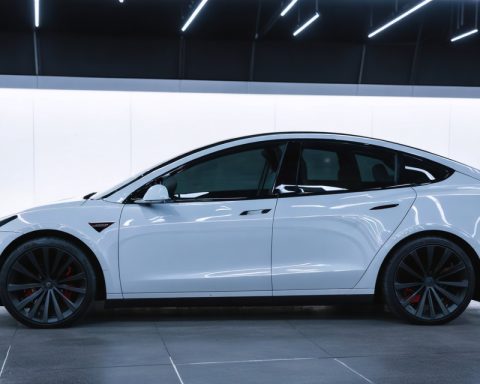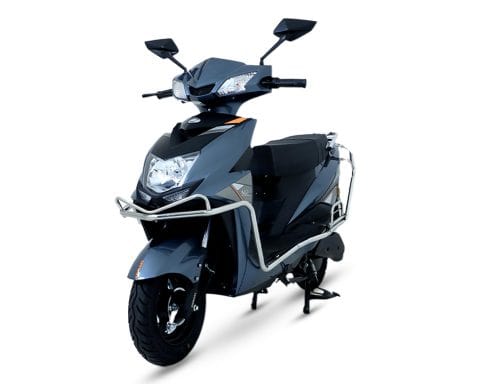Decathlon, reconocida empresa líder en artículos deportivos, ha lanzado al mercado europeo su última innovación: la bicicleta eléctrica de gravel Van Rysel E-GRVL AF MD. Este revolucionario modelo cuenta con un potente y avanzado motor de tracción media Brose Drive T Mag y una batería de 500Wh, estableciendo nuevos estándares de eficiencia y rendimiento.
La Van Rysel E-GRVL AF MD presume de un motor de 250W, capaz de generar un torque máximo de 70Nm. Con cuatro modos de conducción para adaptarse a distintos terrenos y preferencias ciclistas, los usuarios pueden disfrutar de un paseo sin esfuerzo. La bicicleta también cuenta con prácticos controles integrados en el manillar para mayor comodidad y seguridad.
Una de las características destacadas de esta bicicleta de gravel eléctrica es su batería de larga duración de 500Wh, que ofrece una autonomía de asistencia de hasta 150km. Para aquellos que buscan recorrer distancias aún mayores, existe la opción de adquirir un extensor de autonomía. La versatilidad de esta bicicleta se complementa con las ruedas DT Swiss HG 1800 Spline y los neumáticos Michelin Power Gravel 700 x 47, que proporcionan una tracción y estabilidad superiores. Además, el grupo de cambios SRAM Apex de 12 velocidades asegura transiciones suaves y precisas.
Pensando en el ciclista moderno, la Decathlon Van Rysel E-GRVL AF MD está equipada con luces delanteras y traseras, una pantalla a color TFT y conectividad Bluetooth. A través de la aplicación Decathlon Ride en tu smartphone, conectado a la bicicleta mediante Bluetooth, puedes acceder y analizar fácilmente los datos de tus recorridos.
Disponible en siete tamaños de cuadro, la Van Rysel E-GRVL AF MD satisface las necesidades de una amplia gama de ciclistas. Sin embargo, por el momento, solo están disponibles para su compra los cuatro tamaños más pequeños (XS a L).
La bicicleta eléctrica de gravel Van Rysel E-GRVL AF MD ya se encuentra disponible para su compra en Francia, Italia, los Países Bajos, España y el Reino Unido. Con un precio de 3.499,99 ($ USD) en el Reino Unido y 3.549 ($ USD) en los Países Bajos, Francia, Italia y España, esta excepcional e-bike está lista para revolucionar la experiencia de ciclismo de gravel en toda Europa. No pierdas la oportunidad de explorar la naturaleza con la Van Rysel E-GRVL AF MD.
La introducción de la bicicleta eléctrica Decathlon Van Rysel E-GRVL AF MD en el mercado europeo refleja la creciente popularidad de las e-bikes en la región. La industria de las bicicletas eléctricas ha experimentado un gran crecimiento en los últimos años, impulsado por factores como el creciente interés en opciones de transporte sostenibles, la mejora de la tecnología y los cambios en las preferencias de los consumidores.
Según los pronósticos del mercado, se espera que el mercado global de e-bikes continúe en crecimiento, con una tasa de crecimiento anual compuesta (CAGR) de más del 7% desde 2021 hasta 2026. Europa se perfila como un mercado clave para las e-bikes, y se espera que represente una parte significativa de los ingresos del mercado durante este período.
Uno de los principales desafíos relacionados con la industria de las e-bikes es el marco normativo que rodea a las bicicletas eléctricas. A medida que las e-bikes se vuelven más potentes y capaces, es necesario contar con reglas y directrices claras sobre su uso en carreteras y carriles bici. Los gobiernos y los organismos reguladores están trabajando para definir y perfeccionar las regulaciones de las e-bikes para garantizar la seguridad de los ciclistas y otros usuarios de la vía.
La Decathlon Van Rysel E-GRVL AF MD aborda algunos de los desafíos que enfrentan los ciclistas de e-bike. Con su batería de 500Wh y la opción de extensor de autonomía, ofrece una sorprendente autonomía de asistencia de hasta 150km, brindando a los ciclistas la libertad de explorar distancias más largas. Esto resuelve el problema de la ansiedad por la autonomía, que preocupa a muchos ciclistas de e-bike.
Además, el motor de tracción media Brose Drive T Mag y la potencia de 250W de la Van Rysel E-GRVL AF MD garantizan un rendimiento eficiente y potente. Esto resalta la importancia de la tecnología del motor en las e-bikes, ya que impacta directamente en las capacidades de la bicicleta y la experiencia de conducción en general.
Si estás interesado en adquirir la Van Rysel E-GRVL AF MD o conocer más sobre las opciones de Decathlon, puedes visitar su sitio web oficial en Decathlon. Aquí podrás explorar su gama de e-bikes y otros productos para ciclismo.
La disponibilidad de la Van Rysel E-GRVL AF MD en varios países europeos demuestra el compromiso de Decathlon de proporcionar e-bikes accesibles y de alta calidad en todo el continente. Al ofrecer diferentes tamaños de cuadro, la empresa busca satisfacer las necesidades de una amplia variedad de ciclistas y garantizar una experiencia de conducción cómoda y personalizada.
En conclusión, la presentación de la bicicleta eléctrica Van Rysel E-GRVL AF MD por parte de Decathlon marca un hito importante en la industria de las e-bikes. Con sus impresionantes características, versatilidad y precio competitivo, esta e-gravel bike está lista para dejar una huella en el mercado europeo y revolucionar la experiencia de ciclismo de gravel.











